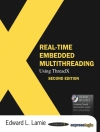This book is intended for specialists in systems engineering interested in new, general techniques and for students and practitioners interested in using these techniques for solving specific practical problems. For many real-world, complex systems, it is possible to create easy-to-compute explicit analytical models instead of time-consuming computer simulations. Usually, however, analytical models are designed on a case-by-case basis, and there is a scarcity of general techniques for designing such easy-to-compute models. This book fills this gap by providing general recommendations for using analytical techniques in all stages of system design, implementation, testing, and monitoring. It also illustrates these recommendations using applications in various domains, such as more traditional engineering systems, biological systems (e.g., systems for cattle management), and medical and social-related systems (e.g., recommender systems).
Table des matières
Formulation of the Problem.- Analytical Techniques for Describing User Preferences: 80/20 Rule Partially Explains 7 Plus Minus 2 Law.- Analytical Techniques Help Enhance the Results of Data Mining: Case Study of Cow Insemination.- Case When Analytical Techniques Invalidate the Conclusions of Data Mining: Reversed Flynn Effect of Decreasing IQ Test Scores.- Analytical Techniques for Taking into Account Several Aspects of a Designed Systems: Case Study of Computation-Communication Tradeoff.- Analytical Techniques for Testing: Optimal Distribution of Testing Resources Between Different System Levels.- Index.












